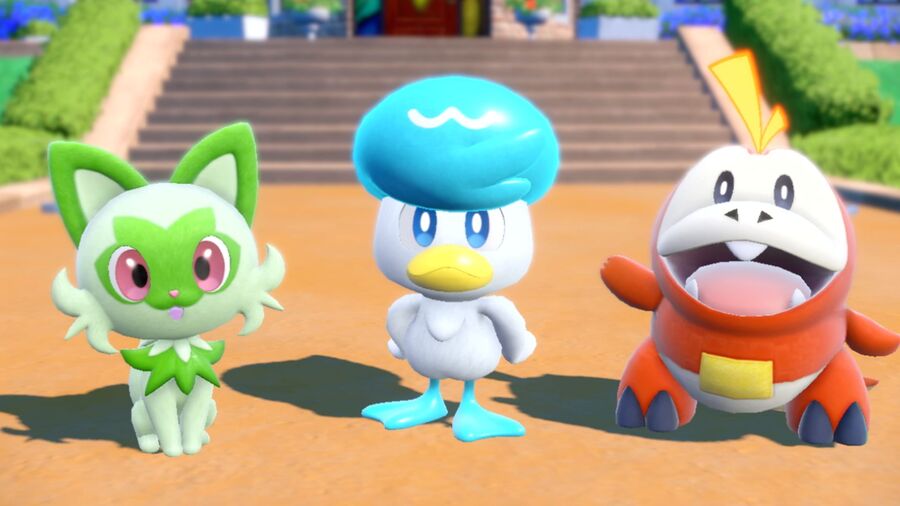Products You May Like
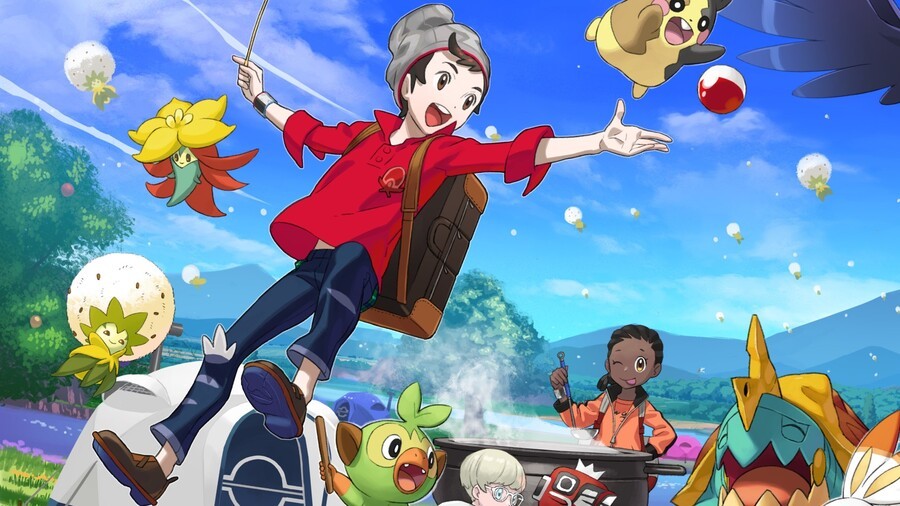
Six years ago, running up to Pokémon’s 20th anniversary, we did a rundown of each of the generations of Pokémon, and then brought it back three years ago to cover Generation 7.
Now, we’re truly in the news cycle for Generation 9’s Pokémon Scarlet & Violet, so it’s time to take a look back at the last three years, the eighth generation of Pokémon, which covers one of the most divisive times Pokémon has ever seen…
A Pokémon Retrospective: Generation 8 – 2019 To 2022
The Build-Up
It all began on Pokémon Day in 2019. Following on from 2018’s Pokémon: Let’s Go, Pikachu! and Let’s Go, Eevee!, a Pokémon Direct was broadcast that focused solely on one trailer and that trailer showcased the first footage of the first brand new Pokémon game for the Nintendo Switch, Pokémon Sword & Shield.
In many ways, the build-up contained some of the more imaginative reveals. While The Pokémon Company toned down on the quantity of reveals, it really increased the style and methods. While you had the usual Nintendo Direct reveals or Pokémon World Championships reveals, there are two other big reveal methods of note. In September, there was an ‘issue’ where Rotom corrupted the official website and had a distorted image on it. This storyline led to the reveal of Sirfetch’d. And in October, TPC held a 24-hour nature livestream set in Glimwood Tangle to eventually reveal the new form, Galarian Ponyta.
However, all was not well with this cycle. Following the second Pokémon Direct and near-unanimous positive reception of Pokémon Sword & Shield reveal, in one fateful E3 Treehouse segment the news dropped that not all Pokémon would be coded within the game and thus couldn’t be caught or transferred within. This created a very loud wave in the community with YouTubers and people on socials creating campaigns about it — arguably fuelled by misinformation and mistranslations distorting people’s disappointment in the decision — and resulted in people being far more critical of everything Pokémon than ever before. This even included harassment and threats against not just those in The Pokémon Company, but those in the Pokémon fandom. Thankfully, that has mostly subsided in the years since.
The Main Series
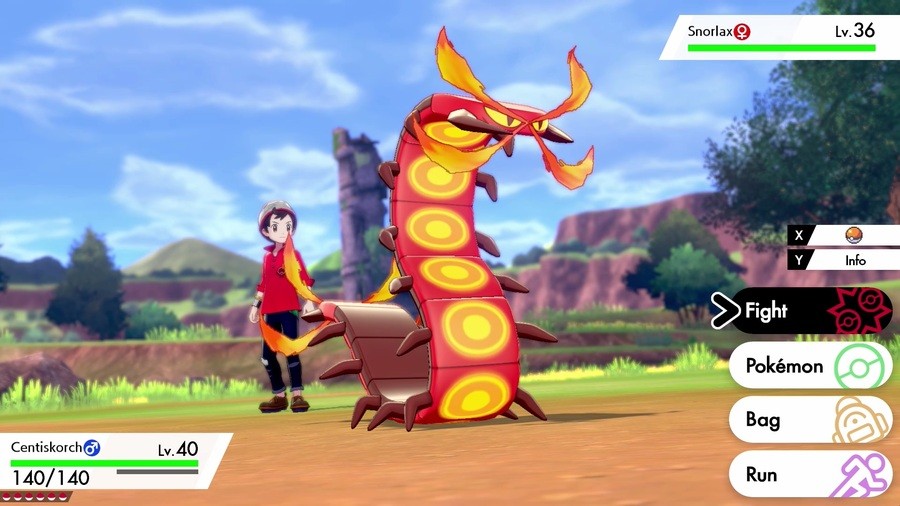
Generation 8 is actually quite unique in that its main series games are vastly different from each other.
The first main series game is Pokémon Sword & Shield, which released November 15th 2019 globally. This game was set in the Galar region, modelled after the UK, and had you play as a new trainer who participates in the Gym Challenge, a play on the sports-focused elements of the UK, and it then goes off the rails as the man who runs the Gym Challenge becomes obsessed with solving an issue that is thousands of years away. In total, by the end of the generation, Pokémon Sword & Shield introduced 89 new Pokémon. It has since become the second best-selling Pokémon game of all time.
Mechanically, this game introduces, Dynamax, which makes your Pokémon giant for three turns with special moves that have wide effects. This also ties into a new co-op feature, Max Raid Battles, a twist on the Raid Battles seen within Pokémon GO that has up to four players team up together to defeat a Dynamax Pokémon for various rewards and a chance to capture it.
The game also featured the first open areas of a Pokémon game, the Wild Area; while not a fully open world, this open area was split into segments with different Pokémon, and the Pokémon varied based on the weather. Throughout the open areas, you could find Pokémon Dens which could be used to start Max Raid Battles, and there were even frequent Max Raid Battle event distributions offering special themed event raids every few weeks throughout the three years of the generation.
In January of 2020, following the game’s launch, a Pokémon Direct was held which revealed that, for the first time in Pokémon history, rather than an enhanced version, Pokémon Sword & Shield would feature the first paid downloadable Expansion Pack, which would release in two parts throughout the year. This also coincided with patches for all players to add over 100 old Pokémon into the game. Even if you didn’t buy the DLC, you could trade with those who bought the DLC and caught them, participate in Raid Battles hosted by those who bought the DLC, or just transfer them in from past games.
The first of these DLC packs, The Isle of Armor, introduced various new Pokémon, specifically Kubfu and Urshifu, and had you go to the titular Isle of Armor where you get mistaken for a new entrant into the dojo. You get given a Kubfu and are told to train it. This was a far more detailed open area than the Wild Area and focused more on exploring and battling.
The second DLC pack was The Crown Tundra. This pack was more narrative-focused and took place in another open area that brought winding caves back. Here, you met the character Peony and investigated various Legendary clues throughout which lead you to discovering the story of Calyrex, the new Pokémon Regieleki & Regidrago, and the Galarian Forms of the Kanto Legendary trio Articuno, Zapdos, and Moltres. This pack also introduced an adaptation of Max Raid Battles called Dynamax Adventures where you go through a gauntlet of Dynamax Pokémon using Rental Pokémon to find a Legendary.
In 2021, everything changed when two more main series games were revealed at the same time. In a first for the franchise, a mainline series title was developed by a studio aside from Game Freak. Pokémon Brilliant Diamond & Shining Pearl are remakes of the original Diamond & Pearl and developed by the company ILCA in Japan. These games were very faithful to the originals and didn’t include many changes other than the inclusion of the battle system from Sword & Shield and some changes to the Underground and Contest systems.
However, Game Freak’s other main series title, Pokémon Legends: Arceus, is a massive change to everything that has come before in Pokémon. This game is set in Hisui, the region that became Sinnoh, and has you play as a teenager who got brought back in time by Arceus to help solve a crisis. The gameplay is very different and has you go through five open areas catching Pokémon and calming Noble Pokémon, giant Pokémon that have been sent berserk through various energy. The gameplay is different and has you able to throw PokéBalls at Pokémon in the overworld and has seamless battles with a simpler battle system compared to Sword & Shield. It also introduced a variety of new Pokémon, mostly evolutions of older Pokémon or special regional variants of older Pokémon.
The main series in Generation 8 was a massive shift. Pokémon Sword & Shield continued as the competitive game, even after the release of Brilliant Diamond & Shining Pearl and Legends: Arceus, and — without using Pokémon HOME — the three games are largely independent and separate, a marked change from all generations prior where the games were nearly fully interactive.
The Pokémon
Generation 8 brought in a total of 96 Pokémon into the fold. 81 in base Sword & Shield, eight in the DLC and a further seven in Pokémon Legends: Arceus. This was the highest number since the shift to 3D in Generation 6. It featured the return of Regional Variants in Galarian and Hisuian Forms and also added special forms given for various Pokémon when they Dynamax; Gigantamax Forms. These forms had no changes other than visuals and the special move used but over 30 Pokémon have Gigantamax forms.
The Starter Pokémon were the Grass-type Grookey, the Fire-type Scorbunny and the Water-type Sobble which just remained the same type as they evolved, a first for quite a while. When they evolved to their final evolutions, the drummer Rillaboom, the football player Scorbunny and the spy Inteleon, they later gained special Gigantamax Forms which pushed their motifs even further.
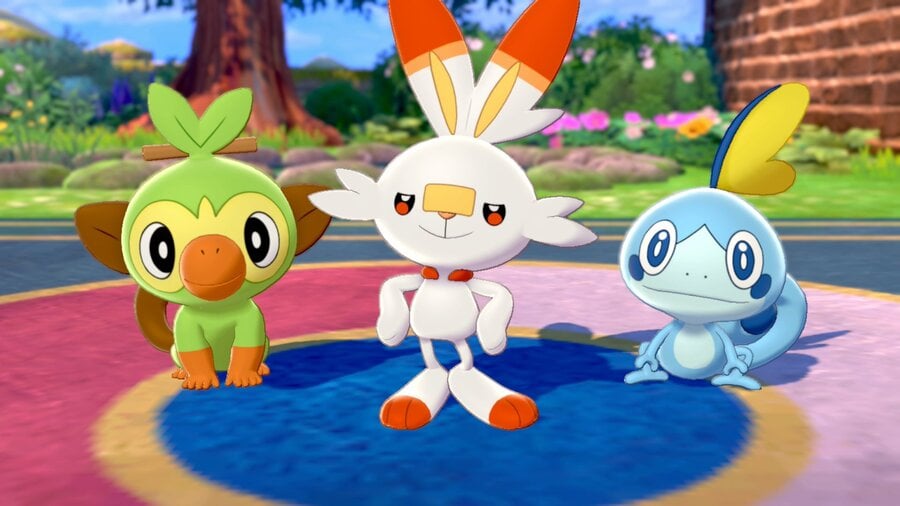
The rest of the designs are arguably among many of the best Pokémon has delivered in a while, and alternate forms were used throughout. Alcremie is a Pokémon based on whipped cream and comes with over 60 different forms based on its flavour and the sweet used to evolve it. Cramorant is a fan favourite with special forms that have it eating an Arrokuda or Pikachu, depending on the health when the form is activated.
This generation also reintroduced a concept that, Sylveon aside, had been gone since 2006; evolutions of old Pokémon. Primarily this is done through evolving regional variants of Pokémon, but with Pokémon Legends: Arceus, several that evolved straight out from older Pokémon were introduced including Wyrdeer, Kleavor, and Ursaluna.
Following the massive amount of Legendary Pokémon in Generation 7, Generation 8 pulled back a bit and started off with just the two heroes of Galar, Zacian & Zamazenta, and the mysterious Pokémon used by Rose to bring on the Darkest Day, Eternatus, with all three having moves that do increased damage against Dynamax Pokémon. The DLC and future games changed this further. The DLC introduced nothing but Legendary Pokémon which tied in to the stories of each DLC pack, and even introduced Regional Variants of Legendary Pokémon. Pokémon Legends: Arceus then followed up by adding yet another Legendary Pokémon, Enamorus which is a fourth addition to a Legendary trio introduced in Pokémon Black & White and even has a Therian Forme.
Mythical Pokémon were very few in this generation, presumably due to the lack of movies. The only new Mythical Pokémon introduced was Zarude, a Dark/Grass-type Pokémon that inhabits the jungle. It even has an alternate “form” of Dada Zarude, a Zarude with a Celebi cape as seen in the movie, Secrets of the Jungle. This generation also gave a Gigantamax form to the mythical Pokémon Melmetal.
Generation 8 really upped the game in the notion of unique Pokémon. From possessed teapots to hungry squirrels, there were new Pokémon for everyone.
The Anime
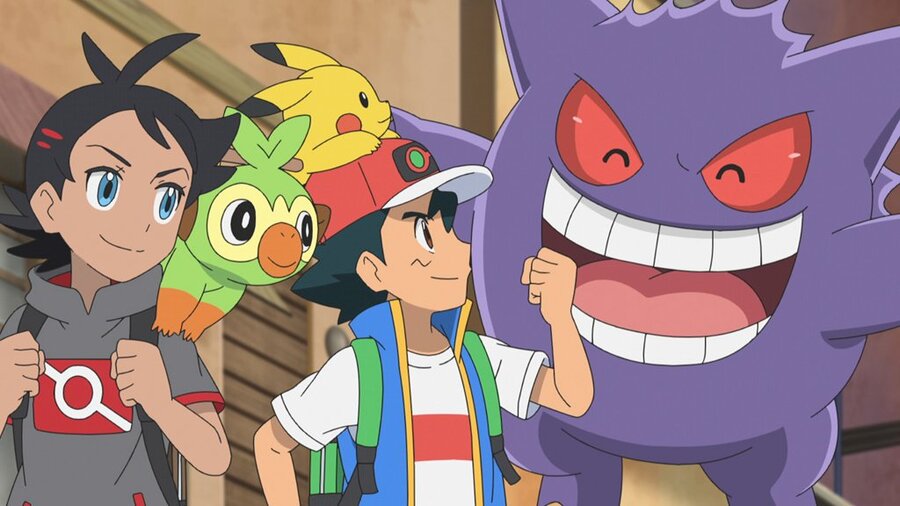
Following the slice-of-life anime style of Pokémon Sun & Moon which had Ash win his first-ever league, the anime shifted to a mix of adventure and slice-of-life with what was known in Japan just as Pokémon, and in the West as Pokémon Journeys. This series changes expectations and, rather than just explore the Galar region, it focused on every single region and had the most continuity of the Pokémon anime with many of Ash’s old friends, enemies, and acquaintances returning.
This series had Ash become a research fellow at Cerise Laboratories alongside a new trainer, Goh. Goh met a Mew long ago, made finding the Mythical Pokémon his goal, and decides the way to that goal is to try and catch every single Pokémon there is.
Ash also finds a new focus with the Pokémon World Coronation Series after first meeting Leon in Galar. Deciding to join up, Ash rises through the ranks battling Gym Leaders and old friends to reach the Masters 8 to join the final tournament against various champions from across the world to see who is the World Coronation Series champion.
As the main anime had a specific focus, and following the success of Pokémon Generations, several web anime series were introduced.
The first was Pokémon Twilight Wings, a short series set specifically in Galar. Each episode focused on a specific Gym Leader of the region and provided insight into their past.
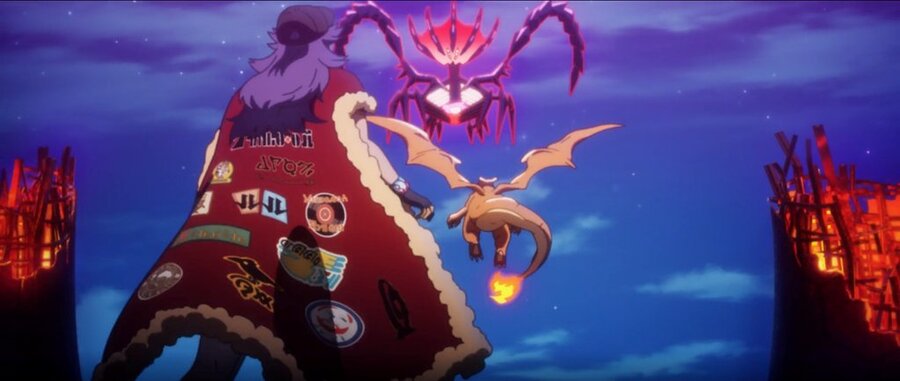
Pokémon Evolutions was the spiritual successor of Pokémon Generations and had an episode based on each region of the main series, featuring a retelling of various story elements including Leon’s fight with Eternatus, Barry fighting Team Galactic in Lake Acuity, and more.
Pokémon Hisuian Snow was created by WIT Studio and was a three-episode tie-in with Pokémon Legends: Arceus. It focused on the original character Alec and showed his first trip to Hisui as a child and when he returns years later.
Finally, PokéToon is a collection of shorts from various different animation studios in Japan and is now releasing on Pokémon TV. It tells various touching stories related to humans and Pokémon.
Movies
This generation was unique in that it has only had one movie. Due to the global situation, this movie got delayed from the traditional July slot in Japan and then took a year to make it through to the West.
Secrets of the Jungle featured Ash meeting a boy called Koko. Koko was raised by a Zarude after the Zarude found it as a baby. Koko grew up thinking he was a Pokémon and eventually found the truth when scientists who worked with his parents started to hunt down the Heart Tree at the heart of the jungle where the Zarude lives.
Spin-off Games
After the bulk of Generation 7 and the latter half of Generation 6 were predominantly mobile, the spin-off titles started to shift with more of a console focus, though some games were available on both console and mobile
Console

At the start of the generation was Pokémon Mystery Dungeon: Rescue Team DX. This game was a full remake of the original Pokémon Mystery Dungeon games on the GameBoy Advance/DS and featured a 3D graphical style that matched the artwork of the games. Only the first 386 Pokémon and any evolutions they had were available in the game, and it included Mega Evolution for the first time.
After over 20 years of people wanting it, in 2021 a sequel to the Nintendo 64 classic, Pokémon Snap, was released. New Pokémon Snap expanded on the concept adding various new stages with branching paths and hundreds of Pokémon to interact with. It featured online leaderboards and showcases so you could show your best photos around.

Console & Mobile
Pokémon Café Mix was released in June 2020 and was a continuation of the concepts set by Pokémon Trozei, Pokémon Battle Trozei, and Pokémon Shuffle and has you complete stages by clearing puzzles, with each stage having specific requirements for completion. As you complete stages, you create dishes to give to various Pokémon, with the hopes to recruit them as staff. The game then got upgraded in 2021 to Pokémon Café ReMix, acting as a soft relaunch of the game with more features.
Pokémon UNITE released in 2021, developed by TiMi Studios. This free-to-play title is a battle arena game where between three and five players join a team and battle against another team. You collect points by defeating wild Pokémon and other players, and have to score them. After the time is up, the team with the highest score wins. It gets routine updates adding more Pokémon and outfits. It has since joined the Pokémon World Championships as of 2022.
Mobile
Pokémon Smile was released in 2020 as a simple mobile game to teach children to brush their teeth. In it, you catch Pokémon simply by brushing your teeth efficiently. Over time it has received updates including a recent addition of Johto Pokémon to the game
Pokémon GO continued on through the generation, adding Pokémon from even more regions, now with Pokémon from every generation within it including Pokémon from Sword & Shield and even Legends: Arceus. Over the generation, it had to adjust to the new world circumstances brought about by the COVID-19 pandemic and allowed for players to play raids remotely, participate in events remotely, and more.
Pokémon Masters EX released right at the end of Generation 7 and has had continual updates ever since. It has added more trainers, known as Sync Pairs, from all regions of the game from Kanto through to Galar.
Pokémon Trading Card Game
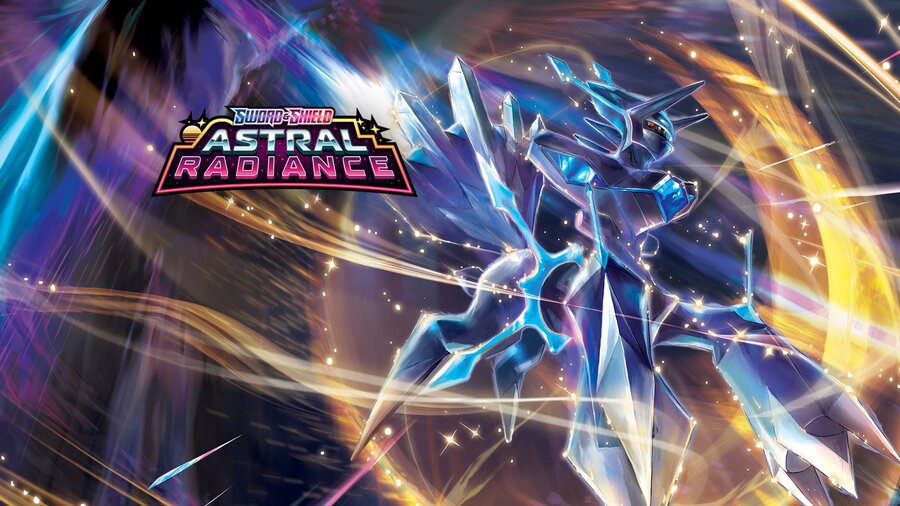
The Pokémon Trading Card Game has continued on throughout Generation 8. Removing Pokémon GX, it introduced a new concept, Pokémon V, which acted in a similar manner in having high HP and strong moves, but they went even further with the addition of Pokémon VMAX, which are the TCG’s equivalent of Dynamax. This increases the Hit Points further but the opponent gains three Prize Cards if they knock it out.
Pokémon V expanded even further as the generation went on. Pokémon V-UNION cards had you have to play four pieces of a card from your discard pile in order to use it on your bench. These cards are very powerful but the means to get them played mean they have not seen much use in competitive TCG play.
Pokémon VSTAR are the latest addition and act as an amalgam of Pokémon VMAX and Pokémon GX. They have increased damage and Hit Points but have a special move or Ability, the VSTAR Power, which you can only use one of per game between all VSTAR Powers in your deck.
The Pokémon Company has also introduced a successor to the wildly popular Pokémon Trading Card Game Online in the West. Pokémon TCG Live is its successor and is coming to PC and Mobile soon, with beta available at time of writing in Canada and Mexico.
Competitive Pokémon

The Pokémon Championship Series hit a stall with the global situation and the Pokémon World Championships in both 2020 and 2021 got cancelled.
During the interim, they kept things going with the Pokémon Players Cup online events for VGC, TCG, and occasionally Pokkén Tournament DX, and the Draft the World tournaments for the TCG. The Pokémon Company also held several events in Japan, and Pokémon Korea held the Pokémon Trainers Cups and other events in the West.
It was then announced that 2022 would be the return to live events, with Regional Championships coming back in March 2022 towards the 2022 World Championships. For the first time, Pokémon GO and Pokémon UNITE were added to the circuit making there be five games in the Pokémon World Championships.
A Look to the Future
While the generation started off with the community imploding due to the lack of all Pokémon in the games, in many ways Generation 8 was one of the strongest generations. From a business perspective, the games sold the best for decades, the TCG has sold over quarter of its total card amount in just these three years, spin-off games on dedicated devices have returned to high acclaim, and multiple web anime series have come. The Pokémon Company has been trying a lot of new concepts in this generation, and they don’t look set to stop experimenting.
While there are still some unreleased projects that we know about, notably Detective Pikachu 2 on the Nintendo Switch and Pokémon Sleep on mobile, as we go towards Generation 9 and Pokémon Scarlet & Violet, we have to wonder just how much momentum will carry over, if these new ideas will continue.
How will Pokémon GO, Pokémon UNITE, and Pokémon Masters EX adapt to the 9th generation? Will movies return? Time will tell, but let us know your thoughts below on how Generation 8 ran and what you hope will come in the future.
